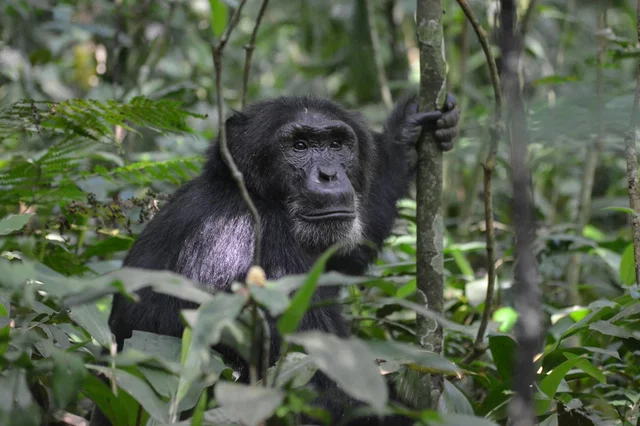Chimpanzees in Uganda are displaying a surprising level of ingenuity in self-care, according to a new study. Field researchers have observed these primates using flying insects to assist in treating their wounds, shedding light on previously little-understood behaviors in wild animals.
While animals are known to respond to injuries in various ways—such as licking wounds or applying leaves and other natural materials—instances of using biologically active materials deliberately remain exceptionally rare.
Previous studies have documented orangutans applying medicinal plants to wounds, but detailed observations in the wild are limited.
Recent fieldwork in Uganda now reveals that chimpanzees may actively recruit flying insects to interact with their injuries. While the precise mechanism remains under study, it is suspected that these insects either help remove debris, prevent infection, or stimulate healing.
“Chimpanzees are far more inventive in responding to injuries than previously appreciated,” says Dr. James Kiyimba, a primatologist involved in the study. “We are only beginning to understand the extent of their problem-solving abilities and awareness of natural healing agents.”
In addition to using insects, chimpanzees continue to employ more familiar methods such as:
• Wound licking – to clean injuries and possibly apply antimicrobial properties found in saliva.
• Leaf application – pressing specific leaves or plant materials on wounds, which may have antiseptic or soothing effects.
Researchers are now investigating whether these behaviors are deliberate and learned socially, or if they emerge instinctively. Understanding this could provide new insights into primate cognition, tool use, and self-care.
This discovery has broader implications beyond primate behavior. Observing how wild animals respond to injuries can inspire new approaches in medicine, biomimicry, and ecological conservation. Moreover, it emphasizes the importance of protecting chimpanzee habitats, where such remarkable behaviors can be observed and studied.
“With wildlife facing increasing threats from habitat loss and climate change, documenting these behaviors is urgent,” Dr. Kiyimba adds. “The more we understand, the better we can protect these intelligent, inventive creatures.”
The use of flying insects to aid wound healing is a remarkable testament to chimpanzee ingenuity, suggesting that wild animals possess more complex problem-solving abilities than often assumed.
Future research will continue to explore how these behaviors evolve and what they reveal about the cognitive world of our closest living relatives.



